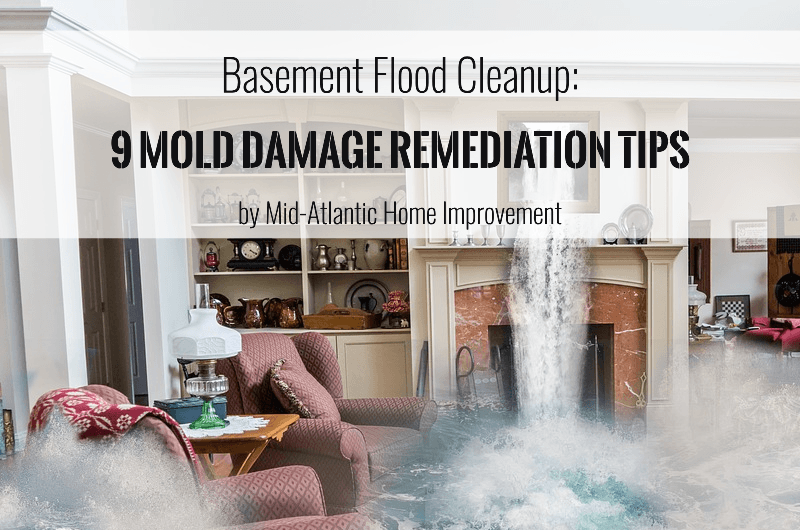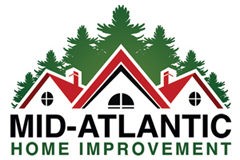Flooding is a major cause of mold growth which, unattended, can lead to allergies, respiratory issues, and property damage. Effective mold damage restoration is crucial to safeguard your health and should be handled promptly.

Basement Flood Cleanup: 9 Mold Damage Restoration Tips
Mold feeds on microorganisms that are invisible to the naked eye, as well as many materials that are commonly used in construction. Thus, it is practically impossible to stop mold growth by eliminating their food sources. Rather, the key to successful mold cleanup and remediation is to remove the water sources mold relies on to grow and spread.
Mold thrives on dampness – it commonly appears in the aftermath of basements flooding, for example. To remedy mold issues, instead of trying to starve it, which is almost impossible, the real solution is to cut off its water supply.
9 Mold Damage Restoration From a Professional Contractor
Here are nine helpful mold damage restoration tips, curated from professional remediators, to help guide you through basement flood cleanup if you’re dealing with a mold problem as the result of a flood:
- Wear an N-95 respirator as you work, along with goggles. These items will ensure you don’t breathe in mold spores, or have them come in contact with your eyes.
- Begin by addressing all plumbing leaks and problematic plumbing fixtures. You need to take care of any and all water problems in your home before tackling the mold. That means getting the flooded area fixed up and dried out.
- Remove all water-saturated items from the area affected by the flooding and dry them thoroughly. It’s best to hang dry such items outside, if possible.
- Use a mixture of detergent and water to remove mold from buildups from hard surfaces. Be sure to wear protective rubber gloves so the detergent and water solution doesn’t irritate your skin as you work. Once you’re done, dry the affected areas using fans and dehumidifiers.
- If you have mold buildups in porous materials or materials that absorb water, you will likely have to throw them out. This advice applies to items like ceiling panels, curtains, drapes, and carpets. Mold can quickly spread into the empty pockets of such things, making it virtually impossible to eliminate in the aftermath of a flood.
- Never apply caulking or paint to surfaces that still have live mold on them. Not only will these compounds fail to solve the underlying mold problem, but they will also crack and peel if the mold isn’t removed first.
- Valuable items and items with sentimental value should be cleaned by an expert. If possible, consult a professional with specialized expertise, such as a furniture repair, art restoration, or carpet cleaning specialist.
- Check carefully for signs of mold near your home’s HVAC vents and intake points. If mold has contaminated your home’s air circulation system, the spores could spread throughout your home and create a much bigger problem.
- Mold buildups caused by sewage leaks or floods involving contaminated water require special considerations. Most inexperienced laypeople do not have the skills or equipment to address these types of problems, so if this case applies to you, your first step should be to call in a professional mold remediation company.
Need Help With Flood Cleanup?
While minor cases of mold growth can be addressed in DIY fashion, extensive or advanced mold damage is best left to professional restoration contractors. It can be difficult and dangerous to your health to attempt to undertake major mold repairs yourself, so if you’re unsure of how to proceed or encounter any setbacks along the way, your next move should be to contact an experienced mold removal contractor.
Has your property been damaged by water, fire, mold, storms and other disasters? We can help you recover – call 804-647-0649, your leading Virginia restoration contractor!
Since 1975, Mid-Atlantic Home Improvement has been helping countless families overcome the devastating setbacks caused by fire damage, water damage, hail or snow damage, wind damage, vehicle damage, and other life-altering disasters.

We are a family-owned and operated Virginia general contractor with over 45 years of experience in construction, restoration and remodeling. Our dedication to your satisfaction is our number one priority!
Call (804) 647-0649!

Monica Chavez says
I like how you point out that while minor cases of mold growth can be handled in a DIY manner, more extensive situations should be addressed by professionals. My parents have a bathroom in their home that has been growing mold for years and it’s becoming a hazard to their health. I think they would benefit from having a professional come and take a look at it. It would probably be beneficial as well for them to speak with an insurance company to find out what kind of coverage they can get for that type of damage.
Lucy Gibson says
After seeing a lot of the water damaged caused by the recent hurricanes, I was curious to see what needs to happen in case of flooding. Growing mold would be a pretty big concern, especially after standing water. I like your point about wearing rubber gloves to protect your skin when applying a detergent and water solution when trying to remove mold. I would assume that most people would want to hire a professional to do this type of work. I’m sure most people don’t have the necessary equipment or experience to do this themselves.
Roger Middleton says
I liked that you had mentioned that it can be important to take a look at all problematic fixtures and make sure those aren’t leaking to avoid future problems. My wife and I have recently found mold in our home and while it’s not huge right now, we’re worried about the possibility of it growing. I’ll have to start looking around for a mold removal company to see if they can handle this and I’ll be taking a look in my shower to make sure there aren’t any leaks.